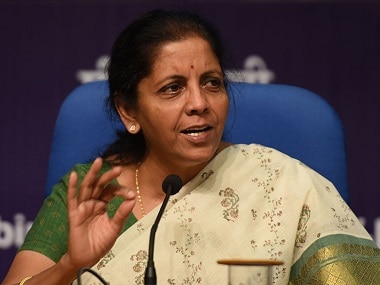The extension of the term of the National Anti-profiteering Authority (NAA) by two years should not come as a surprise to anyone. Politicians of all hues and bureaucrats will rarely give up an opportunity that vests them with power to control and interfere, especially when it comes to businesses. The worst fears of economists and GST watchers have come true and the assurances by then finance minister Arun Jaitley and then revenue secretary Hasmukh Adhia that this was just a transient mechanism have proved illusory, if not downright false. The NAA was set up initially for two years. That is generally considered to be the transition period of the switch to GST. Other countries that set up anti-profiteering mechanisms after the introduction of GST disbanded it after two years.
The reason cited for the extension of the NAA is that it has around 350 cases pending and these cannot be disposed of by the end of the authority’s term in November. That is a fair point. But should the extension not have been accompanied by a rider that no new cases/investigations will be taken up? The fact that it has not shows that the NAA is more than likely to become a permanent fixture.
The inherent suspicion of businesses and the distaste for the word, profit, lurks just under the skin of governments in India. The NAA was born because of such suspicion and will continue because of it. The extension, without a freeze on new complaints, has also shown that the Jaitley-Adhia assurances that the NAA will be a benign, purely deterrent mechanism were also hollow. That should have been obvious from the way the mechanism was designed. The Procedure and Methodology document on the NAA website says it can act on the basis of a complaint by an `interested party’ or on its own. The latter means it need not wait for a complaint. Now, this indeed provides potential for harassment. Even the definition of interested party has been widened. Initially the Central Goods and Services Tax (CGST) Act, under which the NAA has been set up, had specified either suppliers or receivers of goods and services. [caption id=“attachment_5044341” align=“alignleft” width=“380”]  File image of Finance Minister Nirmala Sitharaman. PTI[/caption] In March 2018, a third category was added—“any other person” alleging that a rate cut had not been passed on. This pretty much opened the doors for all kinds of complainants. Is it any wonder, then, that the NAA has a backlog of close to 350 cases, in just two years of its life? Some of the complaints filed have been against shopkeepers, though Adhia would often say the anti-profiteering mechanism was only meant to be a deterrent to big businesses. If, as the government has rationalised, the extension of the NAA was only to help consumers, should there not have been a provision restricting complaints only to consumers? And what could be the logic behind this move, reported in The Times of India, to have GST officials make mock purchases to collect evidence of profiteering? The harassment potential of this move is mind-boggling. In the wake of the extension, GST experts have pointed to the lack of clarity in the methodology used to determine whether a rate cut has been passed on and to compute the extent of profiteering. This problem has been hounding industry for quite some time now. A PricewaterhouseCoopers paper, A Historic Journey, has listed several grey areas for industry: the cost components to be considered while arriving at notional reduced prices, the date on which price cuts should be effected, how will rise in input costs be taken into account, to name just three. In addition, going by legal challenges to NAA rulings, there is also confusion regarding whether a tax cut can be passed on by increasing quantity, instead of instead of reducing price. But what if a complaint is against a retailer or wholesaler who cannot increase quantity? If the ministers in the GST Council thought it fit to extend the NAA’s term, they should also have thought about giving clarity on these issues. Without that, there is a lot of scope for arbitrariness. According to this news report, it has extended its probe from one product of a company to other products, again on its own. Another problematic issue is likely conflict with the Legal Metrology Act. The anti-profiteering mechanism says the company should put stickers regarding the new price, but metrology rules prohibit the use of stickers. There are other sources of potential conflict when it comes to small packs of, say cosmetics when passing on of tax cuts reduce the price to below Re 1. The continuation of the NAA shows up another problem—that of continued multiple rates. The idea of having an anti-profiteering mechanism for just two years in other countries was that transition problems would smoothen out by then. In the case of India, perhaps the rationale also was that rates would stabilise by then.
Multiple rates for multiple categories make the whole process of calculating input costs and setting off of taxes extremely complicated. The price of a final product is not determined by the tax rate on it alone but on the costs of inputs and taxes on them. India appears far away from a scenario with just one or two rates and this gives even more scope for allegations of profiteering, leading to harassment-prone investigations.
NAA orders have been legally challenged by several firms. One, Gurgaon-based Pyramid Infratech has even challenged the constitutional validity of the body. The neta-babu tribe is not going to give up its chance to meddle with pricing. Perhaps courts are the only hope now. (The writer is a senior journalist and author. She tweets at @soorpanakha)


)

)
)
)
)
)
)
)
)



